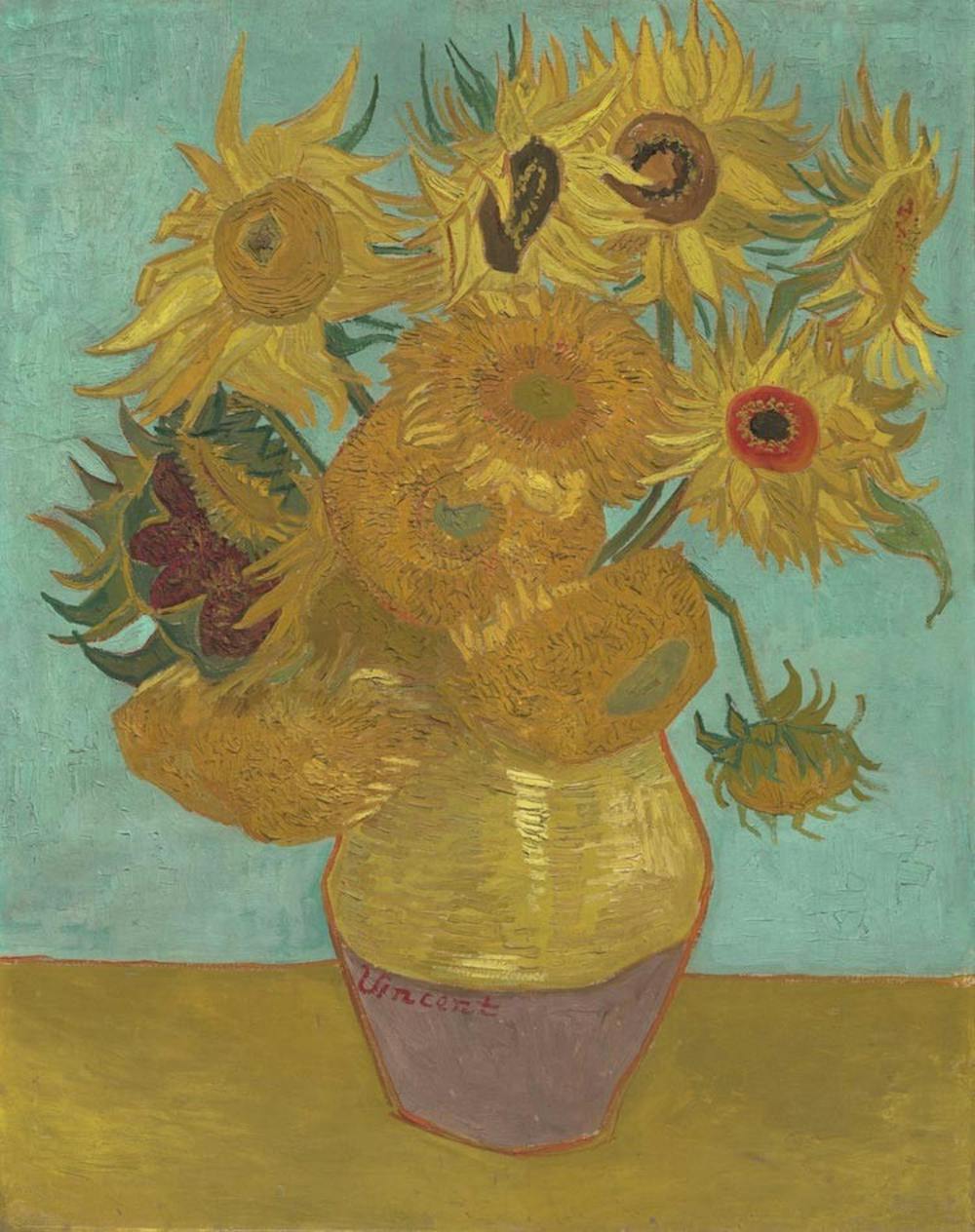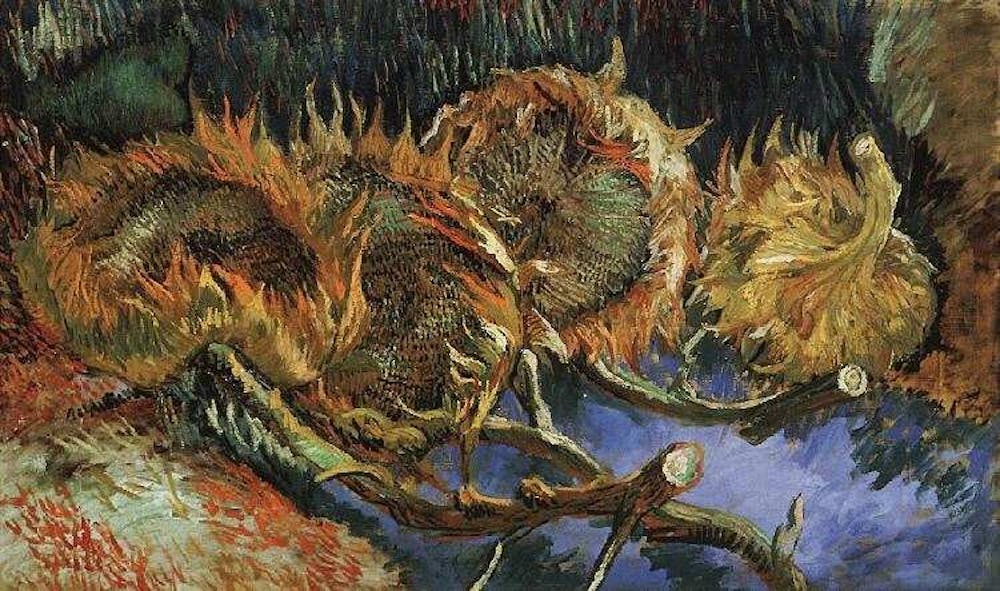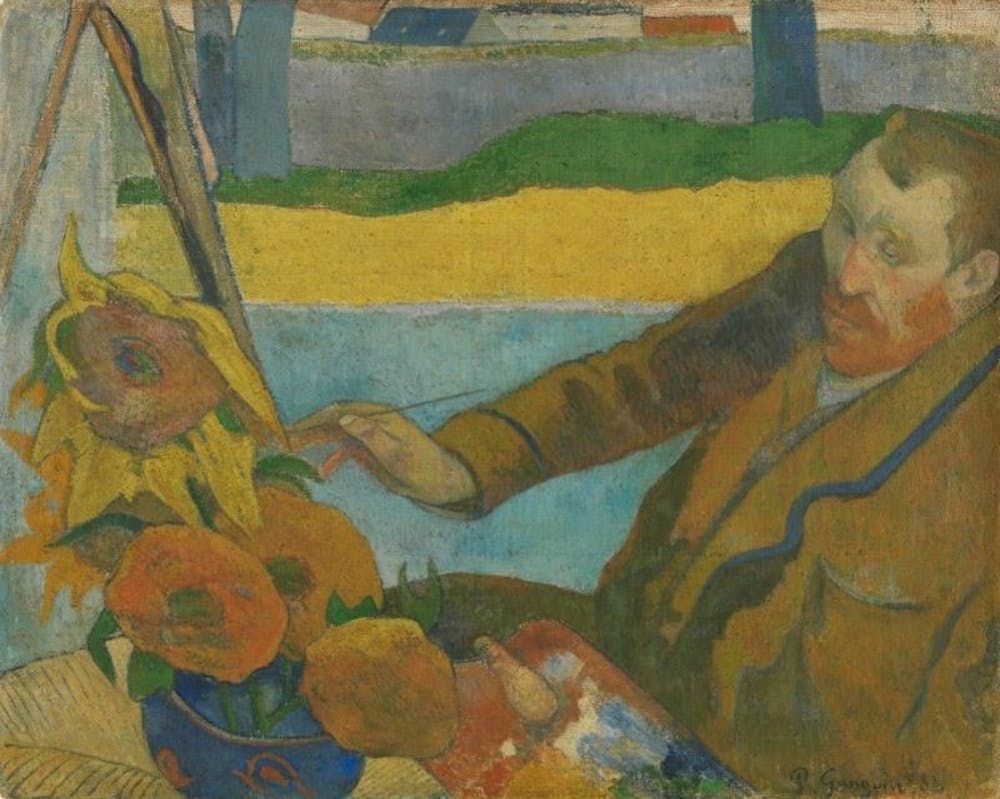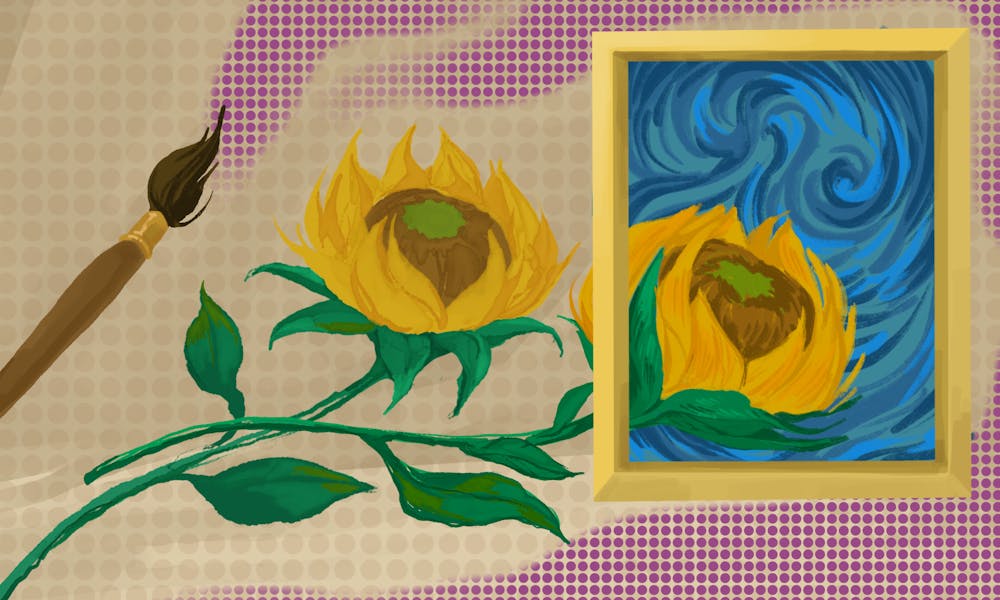With warm weather upon us, and the promise of bright, cheery days illuminating our forecasts, many of us rejoice at the opportunity to bask in the sun. East Coast residents look forward to sunshine the same way sunflowers do, as the flowers turn toward the sun to embrace its warm rays. Renowned Post–Impressionist painter Vincent Van Gogh was fascinated by this natural phenomenon, becoming enthralled with the sunflower and painting it many times throughout his career. With a heavy hand, fascinating color schemes, and emotive compositions, Van Gogh revolutionized art. Taking a deeper look at the sunflower may provide a glimpse into his enigmatic yet genius soul.

Van Gogh created seven images of sunflowers in a vase. One piece is part of a private collection, one was destroyed during World War II, and the other five are scattered across the globe in places ranging from Tokyo to our very own Philadelphia Museum of Art. Claiming that he used three shades of yellow and “nothing else” in his large floral compositions, Van Gogh revealed that the paintings were not just studies of the flower—they were also studies of color. Despite minute hints of green throughout his painting, Van Gogh's paintings retain a monochromatic quality. As a viewer, we're compelled to ask just how he manages to capture such fervor and vibrancy in so few shades.

Vincent Van Gogh's "Four Withered Sunflowers," courtesy of Wikimedia Commons
Aside from these well–known iterations of sunflowers by Van Gogh, the famous artist also painted the flower in other contexts. These include landscapes, the flower's different stages of life, and even in the wallpaper of some of his portraits’ backgrounds. Four Withered Sunflowers is likely not what comes to mind when thinking of Van Gogh's depictions of the flower, as it was painted early in his career and lacks the swirling, colorful quality that he is now infamous for. Nonetheless, the piece is integral to understanding his journey as an artist. The seeds, stems, and petals of the sunflower are rendered with studied detail, with each brushstroke still visible in his iconic painting style.

Paul Gauguin's "Vincent van Gogh Painting Sunflowers," courtesy of the Van Gogh Museum
Upon his move to Arles, in the south of France, Van Gogh invited many artist friends to join him in an idyllic and creative community of cohabitating painters. One such artist was Paul Gauguin, who became a lifelong friend of Van Gogh despite some bumps in the road. While Gauguin had his own, distinct style that varied greatly from Van Gogh’s, he still admired his companion's sunflowers, adding two from the Paris Sunflowers to his own collection. Gaugin even captured Vincent Van Gogh in the process of painting sunflowers in his aptly named piece, The Painter of Sunflowers. He was also fond of portraying the floral feature within his very own sunflower images.
“The sunflower is mine,” Van Gogh told his brother. Much to his pleasure, the sunflower ultimately became synonymous with Van Gogh, functioning like a signature in his works. When Van Gogh died, mourners even laid sunflowers on his grave, representing the artist’s deep association with the flower. The beauty, emotive quality, and creativity of his painted flowers are timeless, leaving room for every viewer to find their own, personal meaning between each petal. Even without a personal connection to Van Gogh, viewers can still forge a deep connection with the intriguingly complex artist by looking closely at his sunflowers.

